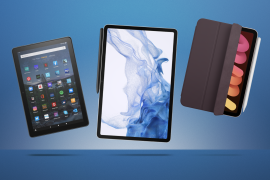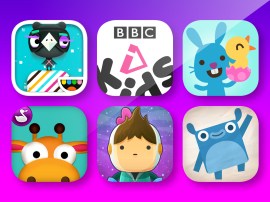UPDATE: Morphing touchscreen keyboard video of Tactus tech blows our minds (hands-on)
Words can't do this justice. Click on through and see this black magic tech for yourselves...
Tactus has released a new video showing off its morphing touchscreen technology and we’re giddy with excitement at what our eyes have seen.
Resembling a normal touchscreen at first glance, Tactus’ touchscreen tech enables honest-to-goodness buttons to raise up from a seemingly normal flat smartphone screen, allowing for improved typing, number dialling and gaming interaction.
Shapes and layouts can be adjusted as necessary and once you’re done tapping away, the buttons magically recede into the screen as if they were never there.
So how does it work? Well, we’ve glanced through Tactus’ paper and from what we can gather the screen has micro channels beneath the top polymer screen layer, which are filled with a clear fluid.
When the fluid pressure increases, the fluid pushes up through holes against the top screen layer, causing it to expand and ‘bubble up’, forming a physical key for you to press.
It’s an ingenious solution to improving the accuracy and naturalness of touchscreen typing and could revolutionise the entire smartphone, tablet and portable computing industry.
But enough fancy talk, check out the video below to see it for your own eyes while we work on getting a hands-on with the magical tech right here at CES in Vegas.
Tactus Technology – CES 2013 from Tactus Technology Inc. on Vimeo.
UPDATE: Stuff can confirm that Tactus’ incredible touchscreen tech isn’t some video trickery as we’ve just had a play on a raised touchscreen keyboard on its demo tablet.
The surface of the tablet doesn’t feel as silky smooth as we’re used to with other slates when the buttons weren’t activated but it’s more than usable for swiping around the screen. You can see a faint outline of each key but not enough to distract you too much.
Double tap within a notes app though and a full QWERTY keyboard will appear in a kind of bubble form over the lower third of the screen – you can firmly press each ‘key’ and though it takes a little getting used to, we’re sure typing will be much more accurate with Tactus baked in than without. Double tap anywhere else on the screen when you’re done and the keys disappear.
As we mentioned above, you could have different configurations of buttons such as a numberpad or – we hope – a d-pad for gaming so long as the buttons don’t overlap. We’d like the idea of a keyboard on one third of a tab in portrait and gaming controls on the opposite end.
Tactus is keeping schtum about exactly who it is working with but says we can expect to see devices rocking these magical bubble keys between late 2013 and early 2014.
Check out all of our CES 2013 news
Asus Qube Google TV review round up
iriver AK100 plays high-res music anywhere



